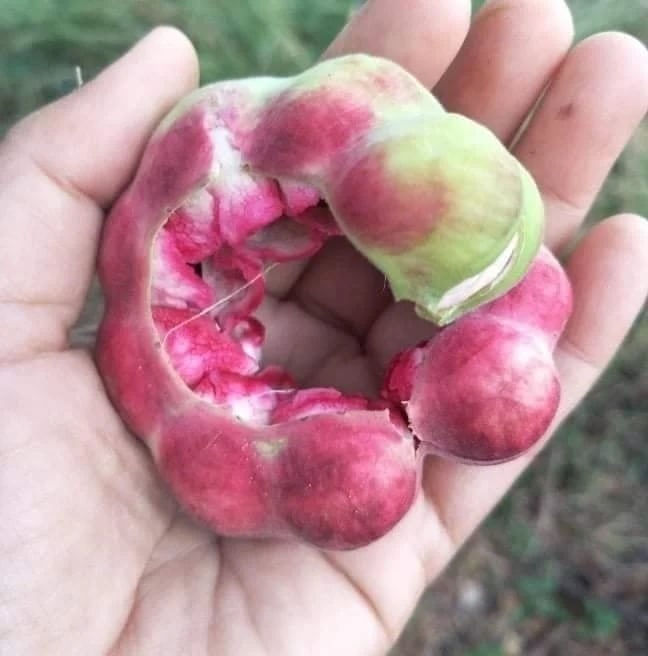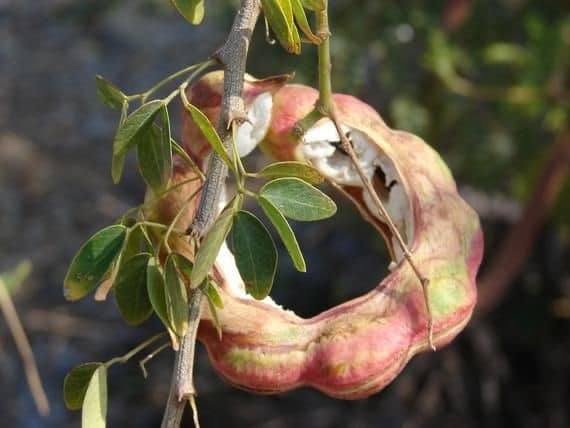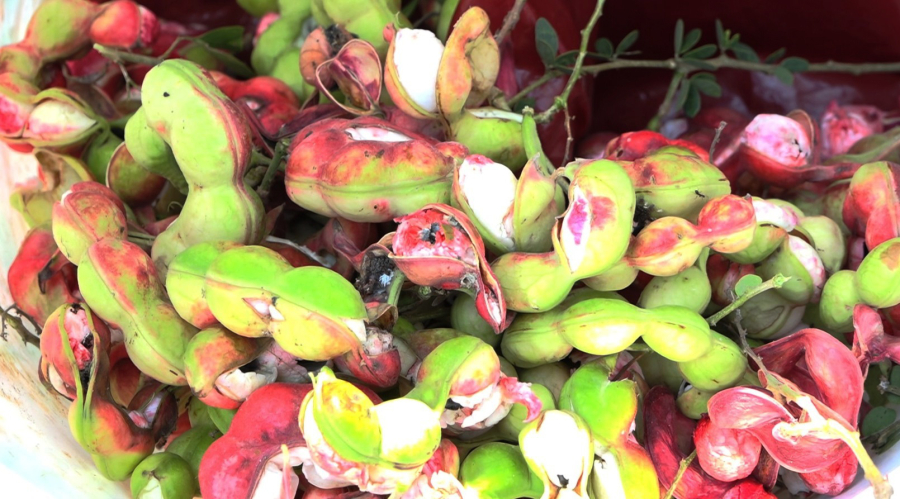Among the famous specialties of Vietnam’s regions, we cannot forget about the wild fruits that grow abundantly in nature. Each season brings forth a different fruit that evokes fond childhood memories, especially for those who grew up in rural areas. One such unique fruit is the Keo plum.
The Keo plum, also known as the water plum or Keo fruit, is a nostalgic snack for the 70s and 80s generations in the Mekong Delta region. However, for city dwellers, this fruit is a novel treat, and many have not had the opportunity to indulge in its delights.
The Keo plum tree is a wild plant often found along canals and dikes, serving both as a windbreaker and a soil retainer. Despite its fragile-looking thorny trunk during its younger years, the tree matures into a sturdy and robust plant. The wider the canopy, the more fruit it bears.

The Keo Plum Tree – A Wild Plant with a Unique Fruit
The Keo plum has a segmented shape similar to a sour plum, but with a fascinating twist—it curls up into a unique circular form. When unripe, the fruit is green, but as it ripens, it transforms into a vibrant red, revealing its delicate white flesh and shiny black seeds on both sides.
In the past, when life was more challenging and snacks were not as abundant as they are today, the Keo plum, along with other fruits like tram, o moi, ca na, and bần, became a beloved treat for children in the villages during its season. This fruit has a subtle fragrance and a delightful sweetness, whether unripe or ripe. As it matures, the fruit splits open, exposing its enticing flesh and seeds.

The Ripened Keo Plum – A Delicious Treat
Recently, a social media post featuring the Keo plum stirred up nostalgic feelings for many, reminding them of the flavors of their childhood.
“I’m from Chau Duc district in Ba Ria-Vung Tau province. When I was young, my friends and I would often sneak behind the gardens to pluck Keo plums, which were both sweet and fun to eat. Back then, apart from the wild trees, some households also cultivated this fruit. Nowadays, finding Keo plum trees has become much more difficult. Occasionally, when I visit my hometown, I see people foraging in the forests and selling them at very reasonable prices, around 15,000-25,000 VND/kg. Whenever I come across them, I buy a few kilograms to enjoy and share with my colleagues in the city,” shared Thanh Giang.

Keo Plums Sold at a Reasonable Price of 15,000 – 25,000 VND/kg
Nowadays, the Keo plum trees are becoming rarer in the Mekong Delta region. Locals observe that when the fruit ripens, the white, spongy flesh becomes visible, along with the black seeds within. Especially when the flesh turns red, it is a tempting sight. Many people harvest the fruit and sell them in local markets to tourists and locals alike.

































